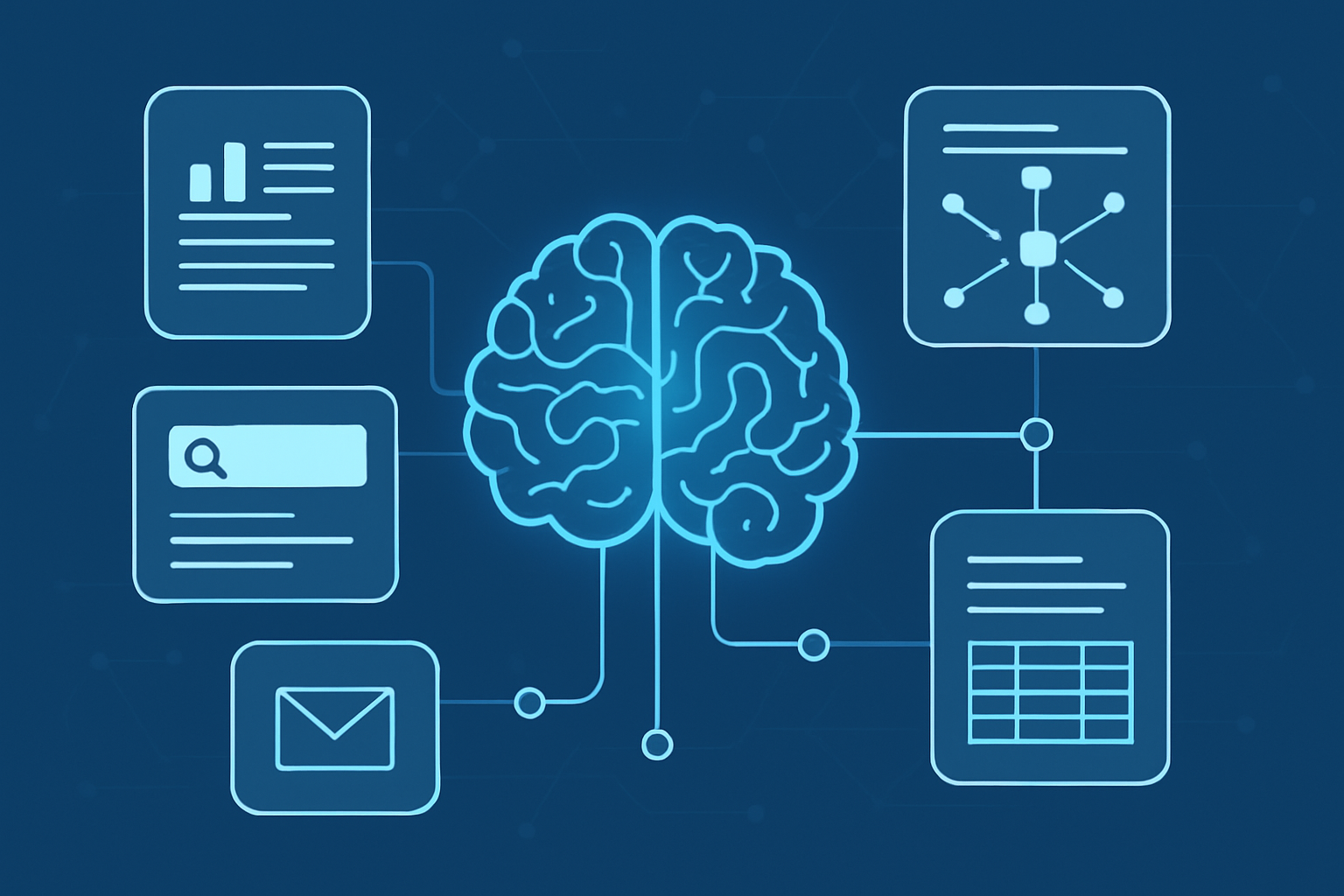
In today's knowledge economy, competitive advantage comes from how effectively organizations leverage their collective intelligence. When information issiloed or difficult to access, decision-making slows, innovation stalls, and opportunities are missed. An AI-powered knowledge base ensures that your organization's most valuable asset—its accumulated knowledge—is always accessible, current, and actionable.
An AI-powered internal knowledge base transforms how organizations manage, access, and utilize their collective intelligence. This system goes beyond traditional document repositories by employing advanced natural language processing to understand, organize, and retrieve information contextually. The system continuously learns from user interactions, automatically categorizing new documents, identifying relationships between information sources, and highlighting knowledge gaps that need addressing.
When employees ask questions, the AI doesn't just search for keywords but understands the intent behind queries, delivering precise answers with direct citations to source materials. It can extract insights from various formats including documents, emails, meeting transcripts, and chat conversations. The system maintains a self-updating knowledge graph that visualizes connections between different information nodes, helping executives identify knowledge clusters and silos within the organization.
Security is maintained through granular permission settings, ensuring sensitive information remains protected while still being accessible to authorized personnel. The system also provides analytics on knowledge utilization, showing which resources are most valuable and which areas might need additional documentation or training. By transforming tacit knowledge into explicit, searchable information, this solution ensures critical institutional knowledge isn't lost when employees transition roles or leave the organization.
Most typical examples are;
Leadership Team Bots, Client Onboarding, Policies and Procedures Bot,
Trainning Bots, Meeting Recap Bots